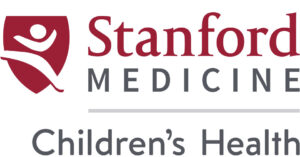How Children Are Faring in San Mateo County
PALO ALTO, Calif. – The majority of children in San Mateo County are doing well on many measures of health and well-being, but that good news masks significant disparities among racial, ethnic and income groups, on issues ranging from physical health to school success to safety.
The most recent findings about local children were presented Dec. 4 to the San Mateo County Board of Supervisors in the 2007 version of “Children in Our Community: A Report on Their Health and Well-Being.”
The report, produced approximately every two years by a collaborative of public and private agencies, tracks key indicators that measure how the county’s children are faring over time in four areas: Children Are Healthy; Children Are Nurtured in a Stable, Caring Environment; Children Are Succeeding in School; and Children Are Safe. The report does not make specific recommendations, but highlights areas that need attention.
“The Children’s Report provides a periodic opportunity for the county to reflect on the areas in which we have made progress for children, and it highlights areas in which we need to make a stronger effort,” said David Alexander, MD, president and CEO of the Lucile Packard Foundation for Children’s Health, which led the team that produced the 2007 report. Alexander and Dr. Scott Morrow, the San Mateo County Health Officer, presented the report to the supervisors.
“The Children’s Report has many good measures on the health status of our children,” Morrow said. “What is very evident, despite improvement in many measures, is the number of disparities along lines of race and class, regardless of the measure. It is clear that we have a lot of work to do for our children in San Mateo County. It is also clear that we have a number of good models, focused on prevention, upon which we can continue to improve.”
The disparities among groups can be seen in many measures. African American mothers, for example, continue to have the highest percentage of babies born at low birthweight (14 percent compared to 6.6 percent for all county infants in 2004). Only 23 percent of economically disadvantaged third graders scored at or above the national 50th percentile on the California Achievement Test for reading in 2006, compared to 61 percent of non-economically disadvantaged students. Though the overall teen birth rate has fallen in the last decade, rates for Latinas and African Americans were eight to 10 times higher than for Caucasian/white and Asian teens in 2004.
Among the report’s positive findings, the estimated number of children in the county without health insurance dropped from 17,000 in 2003 to 3,000 in 2006, due to the Children’s Health Initiative, a countywide enrollment effort. In addition, infant mortality rates improved, and higher percentages of women received prenatal care.
Less encouraging were findings that in 2004 one-quarter of 5th, 7th and 9th graders were overweight, and in 2005 about 33 percent of children ages 2-11 had never seen a dentist. Also, county 11th graders surveyed during 2004-2006 were more likely than their state counterparts to report use of alcohol, marijuana and cigarettes within the past month.
The report also highlights a number of major community efforts under way to address a range of issues, including providing preschool for all 3- and 4-year-olds, promoting positive youth development and decreasing childhood obesity.
The report was funded by the Lucile Packard Foundation for Children’s Health, the San Mateo County Health Department, the Silicon Valley Community Foundation and Lucile Packard Children’s Hospital.
The full report is available at www.kidsdata.org/sanmateoreport.

